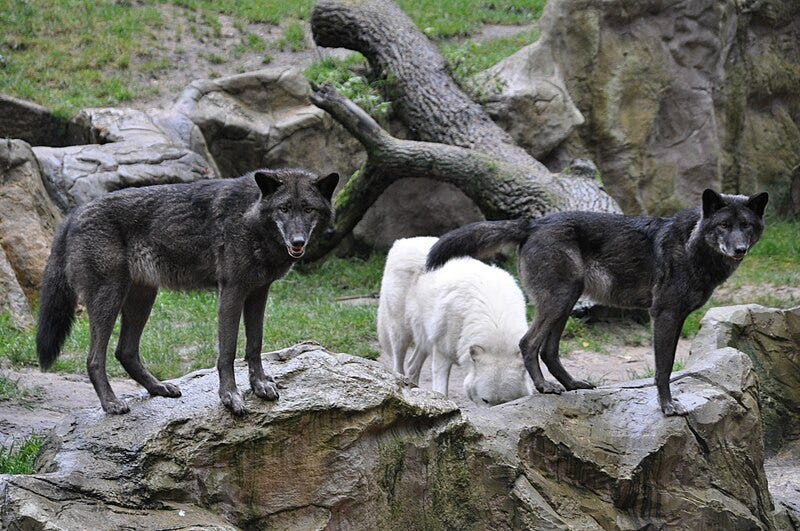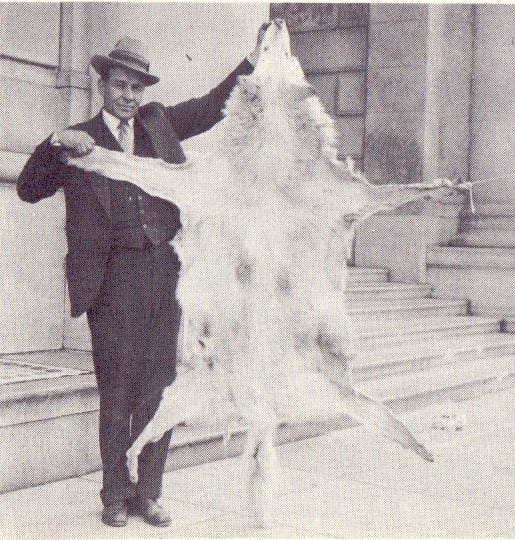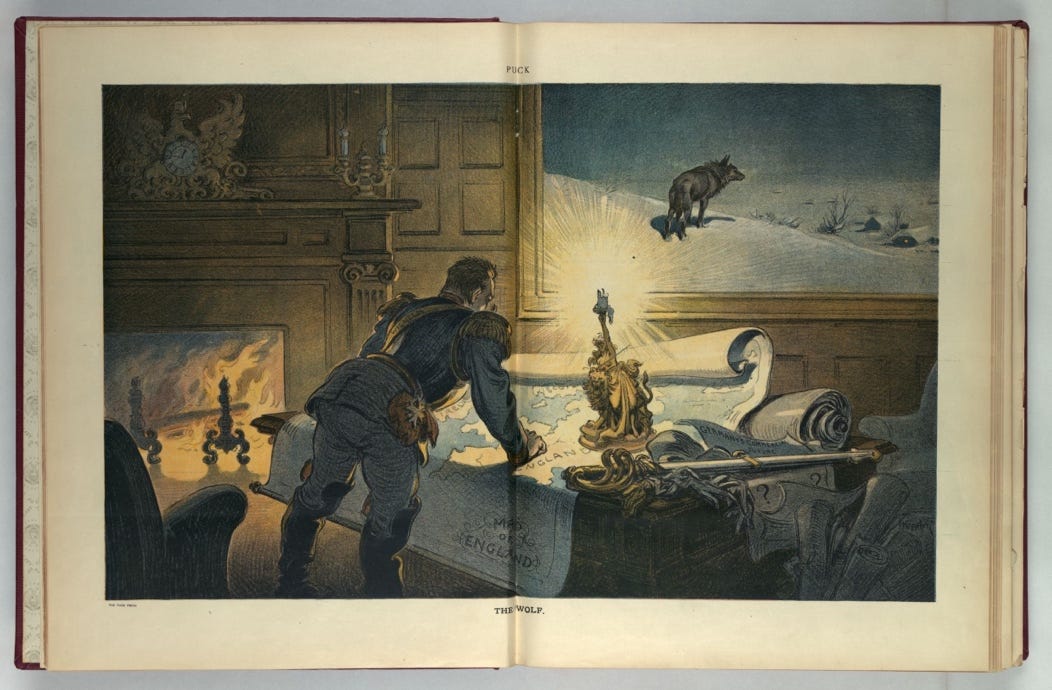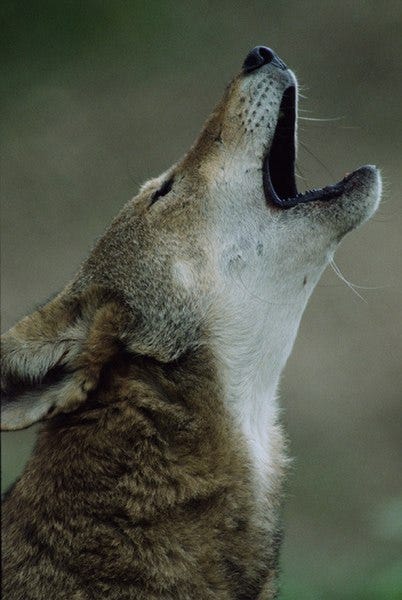“A Big Wolf Around”
Theodore Roosevelt’s Reflections and Interactions with Wolves 🐺
Anyone who knows my husband Cole knows that he loves wolves. His home office is full of wolf figurines, pictures, and other ephemera. So in honor of Cole and in recognition of National Wolf Awareness Week later this month, I am dedicating the October issue of Missing Pieces to the topic of wolves.
Since Theodore Roosevelt was a naturalist at heart, it’s probably not too surprising that there is a good deal of information in the Theodore Roosevelt Digital Library about wolves. Much of the material is letters to or from TR about wolves and their behavior.
As an example, TR wrote Colman Dudley Frank of Columbia University in 1908 noting, “I have usually seen wolves in straggling parties, but I have once or twice seen them traveling in single file.”
In a 1907 letter, TR mentions the white wolves and black wolves of the Little Missouri River to Caspar Whitney of The Outlook. TR observed that he personally never saw either but had heard they were there.
There’s even a letter from taxidermist William W. Hart to TR in 1907 that discusses the president’s wolf rug! Hart wonders if he can replace the broken teeth in the skull or if he should replace the skull with a wolf skull of his own.
Perhaps my favorite letter featuring wolves, though, was from TR to his son Ted around 1889. It is one of TR’s famous picture letters. In the bottom left of the page, TR draws a picture and includes the accompanying caption, “One day the cow and the calf walked out to the meadow, though the pony and the dog told them they had better not because there was a big wolf around.”
Source: Letter from Theodore Roosevelt to Theodore Roosevelt. Theodore Roosevelt Papers. Library of Congress Manuscript Division. Theodore Roosevelt Digital Library. Dickinson State University.
Of course, wolves were one of the many great game animals TR hunted during his life. But he wanted a fair hunt. In discussing an upcoming wolf hunt with Cecil Andrew Lyon in a 1905 letter, TR expressed his concern about a situation like the Mississippi bear hunt when a bear was tied up for TR to shot—and he refused. No teddy wolves for TR! He wrote, “If we are able by legitimate hunting to get after some big wolves, I should be glad.”
As scholars like Darrin Lunde have noted, TR was not just a trophy hunter. Of the many specimens TR contributed to organizations like the Smithsonian Institution, wolves were included in that list.
In July 1907, TR sent C. Hart Merriam, chief biologist at the Department of Agriculture, the injured skull of a wolf he caught in Montana in 1889, noting, “I am afraid the specimen is of no value to you, but I send it on the off chance.” Merriam did consider the skull of value, adding, “Your numerous contributions to the National collection will increase in value and importance as time goes on.”
Source: The Wolves of North America, Vol. 1. Edward Alphonso Goldman. Wikimedia Commons.
Ten years later, TR sent a skull and skin of a "very dark-colored wolf" to Merriam that he had killed about fifty miles north of Quebec. Both men recognized the challenge of getting eastern wolves, and Merriam observed that no skins from Canada had yet been contributed to the collection so TR’s was a great asset.
The digital library even includes correspondence between Ellen Velvin, a well-known female naturalist of the early 1900s, and TR. Velvin wrote to TR in 1906 requesting to dedicate her upcoming book, Behind the Scenes with Wild Animals, to him—and TR agreed. He also suggested that she include Dr. Frank Baker’s statement about wolves in her book, which she did.
Source: Behind the Scenes with Wild Animals. Ellen Velvin. Google Books.
In addition to letters, the digital library includes several cartoons that feature wolves—some that depict wolves as savage creatures like this one and others that focus more on their majesty like this one.
Source: The wolf. Prints and Photographs division. Library of Congress Prints and Photographs Division. Theodore Roosevelt Digital Library. Dickinson State University.
Many of the ranchers TR lived around during his time in the Badlands in the 1880s saw wolves as a menace that could not co-exist with cattle ranching. Even TR himself poisoned wolves to keep them away from his cattle, as he recorded in Hunting Trips of a Ranchman (1885).
As a result, the Badlands saw a precipitous decline of wolves in the area. As TR writes in Hunting Trips, “A few years ago both wolves and coyotes were very numerous on the plains, and as Indians and hunters rarely molested them, they were then very unsuspicious. But all this is changed now.”
Source: US Fish and Wildlife Service Headquarters. Wikimedia Commons.
Whether you’re a wolf lover like Cole or you’re more wary like TR and his rancher friends, it’s important to recognize that wolves play an essential role in a healthy ecosystem.
In case you didn’t know, three species of wolves are found in the United States—the gray wolf, the Eastern timber wolf, and the red wolf (found only in the wild in North Carolina!). Gray wolves have five subspecies, including the Great Plains wolves that TR likely encountered during his time in the Badlands.
In honor of Wolf Awareness Week, I’d encourage you to learn from TR and recognize the importance of these majestic creatures and the need for their conservation. Awoooooo!


![[Two wolf pups and bird] [Two wolf pups and bird]](https://substackcdn.com/image/fetch/$s_!k_gG!,w_1456,c_limit,f_auto,q_auto:good,fl_progressive:steep/https%3A%2F%2Fsubstack-post-media.s3.amazonaws.com%2Fpublic%2Fimages%2Fcae8e6e1-41d2-4099-a994-0e43cc8c3184_277x309.png)






For those wanting to learn more about wolves, I have followed this nonprofit for years now https://www.livingwithwolves.org/
I believe that wolves are one of many animals that are misunderstood and vilified because they can look scary. Any good ecosystem has an abundance of prey and predators, like wolves.